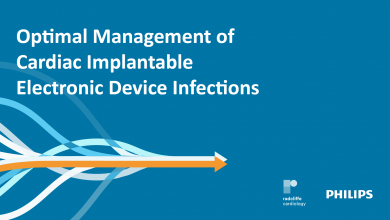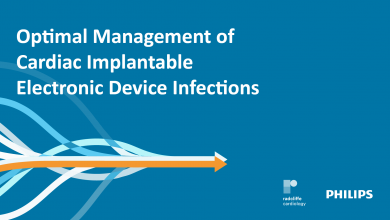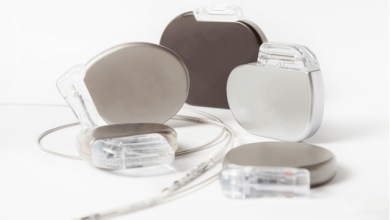Search results
Optimal Management of CIED Infections
Added:
1 year ago
Podcast Series
Author(s):
Cristian Podoleanu
,
Jean-Claude Deharo
Added:
3 years ago
The increasing use of cardiac implantable electronic devices (CIEDs) for management of cardiac conditions has over the last few years been associated with higher infection rates.1 Expanded CIED use alone cannot account for this rise,2–4 which involves both patient- and device-related factors. Indeed patients are tending to be older and presenting with co-morbidities, while devices are becoming…
View more
Author(s):
Khaldoun G Tarakji
,
Christopher R Ellis
,
Pascal Defaye
,
et al
Added:
3 years ago
Over the last few decades an increasing body of evidence has supported the role of cardiovascular implantable electronic devices (CIEDs) including permanent pacemakers (PPMs), implantable cardioverter-defibrillators (ICDs) and cardiac resynchronisation therapy (CRT-D [with defibrillator] and CRT-P [without defibrillator]) in improving quality of life and survival.1 In addition, there has been a…
View more
Optimal Management of CIED Infections
Video Series
Author(s):
Wei-Yao Lim
,
Sandeep Prabhu
Added:
3 years ago
The number of cardiac implantable electronic devices (CIED) has been increasing year-on-year.1 This, coupled with improvements in life expectancy,2 means that more elderly patients will meet the criteria for a CIED. National and international guidelines set out clear criteria and make recommendations for CIED use based on available evidence.3–6 However, the majority of clinical trials include few…
View more
Author(s):
Jaber Abboud
,
Joachim R Ehrlich
Added:
3 years ago
Implantable cardioverter defibrillators (ICDs) have been used for over 30 years to prevent sudden cardiac death (SCD). The first indications for ICD placement were secondary prevention; later trials demonstrated a primary prevention benefit of ICD therapy in patients at risk of SCD. ICD therapy prolongs life in both patient populations.1 However, the efficacy of an ICD depends on its ability to…
View more
Author(s):
Anthony C Li
,
Amit Kaura
,
Nicholas Sunderland
,
et al
Added:
3 years ago
Since the 1990s, the publication of several large randomised controlled trials (RCTs) have established the efficacy of implantable cardioverter defibrillator (ICD) therapy in reducing the risk of sudden cardiac death (SCD) in high-risk patients. Collectively these trials have demonstrated a significant all-cause mortality reduction compared with medical therapy alone, for both the primary and…
View more
Author(s):
Deepika Narasimha
,
Anne B Curtis
Added:
3 years ago
Implantable cardiac devices such as implantable cardioverter- defibrillators (ICDs) and cardiac resynchronisation therapy (CRT) devices lead to improved survival and better clinical outcomes in appropriately selected patients with heart failure (HF) with a reduced ejection fraction (EF). Although there are significant sex differences in the aetiology, pathophysiology and clinical course of HF,…
View more
Management of Cardiovascular Implantable Electronic Devices Infections in High-Risk Patients
Author(s):
Charles Kennergren
Added:
3 years ago
Article
Digital Health: New Cardiac Implantable Devices & App Based Solutions to Increase Clinic Efficiency
Author(s):
Enrico Caiani
,
Paul Roberts
,
Martin R Cowie
Start date:
Jun 06, 2019
Broadcast

















